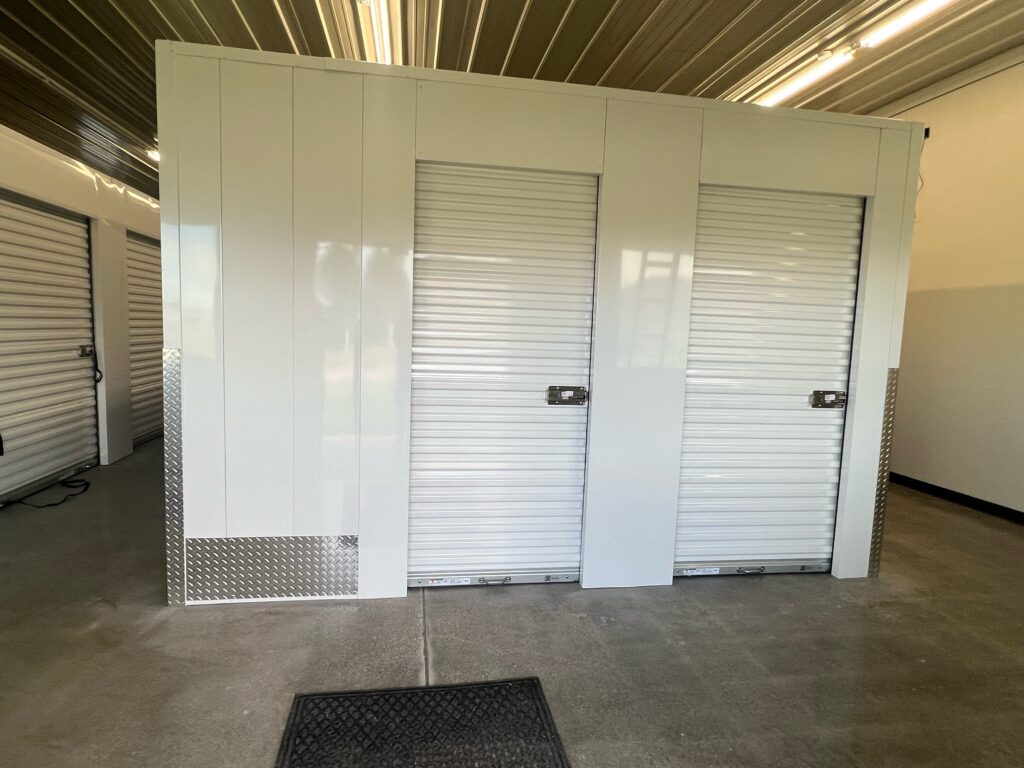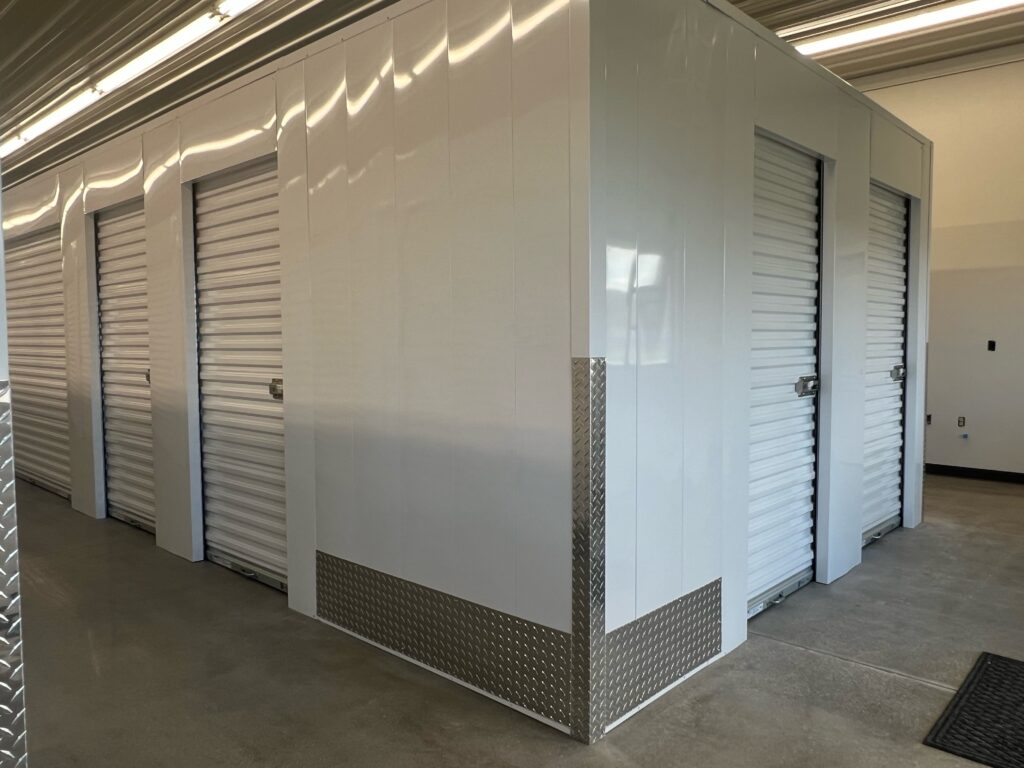Storage Units With Climate Control: Costs, Sizes & Benefits
Storage units with climate control keep temperature and humidity steady, protecting your stuff from heat, cold, and moisture. Instead of just blowing air, true climate control uses HVAC and dehumidification to prevent big swings and condensation. Many facilities target about 55–80°F with humidity under roughly 55%. The result is an indoor, sealed space with cleaner air—ideal for wood furniture, electronics, photos, documents, instruments, textiles, and other sensitive items.
In this guide, you’ll learn how climate control differs from simple temperature control, who really needs it (and who can skip it), the targets to ask for, what it costs in practice, and what drives price. We’ll cover common unit sizes, how to choose, must‑have features, how to verify claims, Sioux City weather factors, packing tips, and how to rent online—so you can pick the right unit with confidence.
Climate control vs temperature control: what’s the difference
Storage units with climate control regulate both temperature and humidity, using HVAC plus dehumidification to hold roughly 55–80°F and keep relative humidity under about 50–55%. Temperature-controlled storage manages only temperature. That means humidity can spike, causing condensation, warping, rust, or mold. Climate-controlled units are typically indoor and better insulated, so conditions stay steadier year‑round.
- Climate control: Temp + humidity regulation for sensitive items.
- Temperature control: Temp only; humidity swings remain.
- Verification: Ask for written temp/RH ranges and how they’re maintained.
Who needs climate-controlled storage (and who can skip it)
Whether you need climate-controlled storage comes down to what you’re storing, for how long, and local weather swings. If moisture, heat, or cold could warp, crack, rust, or mold your items, storage units with climate control are worth it. Longer stays, summer humidity, and winter freezes increase risk; short, mild-season storage lowers it.
- You likely need it if you’re storing: Wood furniture (especially antiques), musical instruments, electronics, photos, books/documents, vinyl records/discs, delicate textiles, artwork, or collectibles.
- You can often skip it for short stints if you’re storing: Plastic bins of everyday goods, metal tools, patio gear, sports equipment, or non-upholstered items—provided they’re fully dry and packed off the floor.
Benefits you can expect from climate-controlled units
When conditions swing from summer humidity to winter freezes, delicate materials pay the price. Storage units with climate control hold steady temps (often ~55–80°F) and manage humidity (about 50–55%), so moisture can’t condense and heat/cold won’t stress materials. The payoff: fewer cracks, warps, rust, or mold—and a cleaner indoor space you can actually use.
- Prevent moisture damage: Controlled RH helps stop condensation, mold, mildew.
- Protect heat/cold‑sensitive items: Reduces warping, cracking, rust, data loss.
- Reduce dust and pests: Indoor, sealed spaces block contaminants better.
- More comfortable access: Steadier indoor conditions make visits safer, easier.
Temperature and humidity targets to look for
You want written, measurable standards. For temperature, most reputable facilities keep units roughly 55–80°F (some specify 55–78°F or 55–85°F, depending on the site). For humidity, look for relative humidity at or below 50–55% to limit condensation, warping, rust, and mold. Confirm where readings are taken (inside units, not just hallways), how often they’re logged, and what alerts and backups keep storage units with climate control steady during outages.
- Target temp: 55–80°F year‑round.
- Target RH: ≤50–55% relative humidity.
- Real monitoring: Unit‑level sensors, automated alerts, accessible logs.
- True climate gear: HVAC plus dehumidifiers, indoor sealed build, backup power.
How much climate-controlled storage costs
You’ll pay a premium for protection. Across the U.S., industry data shows climate-controlled storage averages about $149 per month and runs higher than non‑climate units by roughly $10 monthly, with many markets seeing a 20–50% premium. Actual rates vary widely based on unit size, city, season, and amenities, but the pattern is consistent: storage units with climate control cost more because they regulate both temperature and humidity.
- Quick rule of thumb: Budget standard unit pricing, then add either about $10/month or a 20–50% uplift for climate control.
- Plan ahead: Larger sizes, peak summer demand, and added features can push totals higher (details next).
What drives price: size, season, location, and amenities
Rates for storage units with climate control move with supply and demand. You’re paying for space, consistency (HVAC + dehumidification), and convenience. Expect prices to shift based on market conditions and the quality of the facility’s build and features.
- Unit size: Bigger units cost more; you’re paying per square foot of protected space.
- Season/demand: Summer moves and month-end spikes raise rates and shrink discounts.
- Location: High-demand neighborhoods or limited local supply increase pricing.
- Amenities: True temp + humidity control, indoor access, 24/7 entry, keyless access, and strong video security can carry a premium.
- Term/availability: Longer commitments, waitlists, and low-vacancy periods reduce promotional pricing for storage units with climate control.
Common unit sizes and what fits
Picking a size is easier when you picture real items. Here’s a quick, practical guide to what typically fits in common ground‑floor storage units with climate control. These aren’t hard limits—smart packing, shelving, and uniform boxes can boost capacity. When unsure, size up for airflow.
| Size (WxL) | What typically fits |
|---|---|
| 5×5 | Closet-size: seasonal bins, small shelves, documents, a few electronics/instruments. |
| 5×10 | Small room: mattress set, dresser, bike, compact sofa, several boxes. |
| 10×10 | One-bedroom: sofa, queen bed, dining set, appliances, stacked boxes. |
| 10×15 | 2–3 rooms: sectional, bedroom set, larger appliances, inventory racks. |
| 10×20 | Larger household or business stock with space for aisles. |
How to choose the right size for your items
Start by listing everything you’ll store, then measure the longest, tallest, and bulkiest pieces. Decide if you need walk-in access or if stacked, long-term storage is fine. Fragile items and shelving change the footprint, so plan for safe stacking and a little breathing room—especially in storage units with climate control where airflow helps protection.
- Match items to a size tier: Use the guide above as your baseline.
- Measure for access: Account for door width, box depth, and a small center aisle.
- Plan vertical storage: Shelving and uniform boxes boost capacity but require clearance.
- Think ahead: If you’ll add items over time, size up for flexibility and airflow.
Must-have features in a climate-controlled facility
Climate control only protects if it’s consistent and verifiable. When you compare storage units with climate control, prioritize build quality, monitoring, and security—not a hallway thermostat. These essentials keep temp and humidity in range and your belongings safer through heat waves, cold snaps, and outages.
- True HVAC + dehumidifiers: Defined 55–80°F, ≤50–55% RH.
- Unit-level sensors and logs: Readings inside units, automated alerts.
- Backup power and redundancy: Generators or failsafes for outages.
- Secure access control and 24/7 video: Restricted entry, audit trails.
- Clear, written standards: Posted temp/RH ranges, service schedules.
How to verify a unit is truly climate-controlled
Claims vary, and some “climate” ads mean a fan in a hallway. Verify that storage units with climate control regulate both temperature and humidity to about 55–80°F and ≤50–55% RH—and that measurements come from inside units, not just corridors, with real monitoring and backup plans.
- Get it in writing: Temp/RH ranges, where readings occur, frequency.
- Check the equipment: HVAC plus dehumidifiers—not fans—inside an indoor, sealed facility.
- Confirm monitoring: Unit-level sensors, automated alerts, viewable logs.
- Ask about resilience: Backup power or procedures for outages and extremes.
- Spot‑check readings: Have staff open a unit and show today’s temp/RH.
Sioux City weather: when climate control matters most
Sioux City sees humid summer stretches, sharp winter freezes, and quick shoulder‑season swings—prime conditions for condensation and material stress. When warm, moist air meets cooler surfaces, moisture can accumulate on wood, paper, electronics, and metal. Storage units with climate control stabilize temperature and humidity to minimize those risks and keep your belongings consistent through the ups and downs.
- All‑summer storage: Humidity control helps prevent mold, mildew, and warping.
- Overwintering valuables: Steady temps protect electronics, instruments, and finishes.
- Frequent access: Opening a unit often invites moist air; control reduces condensation.
What not to store in a climate-controlled unit
Climate control protects materials, but it doesn’t change what’s allowed. Most facilities set lease rules to prevent pests, damage, and liability. Always check the agreement. As a rule, don’t place the following in storage units with climate control—no matter how steady the temperature and humidity.
- Perishables or anything living: Food, plants, pet supplies that spoil.
- Wet or damp items: Moisture spreads mold to everything nearby.
- Strong‑odor items: Can permeate fabrics and attract pests.
- High‑value/irreplaceable items: Cash, jewelry, original fine art, vital originals.
- Hazardous/flammable materials: Gasoline, propane, paint thinner, fireworks are typically prohibited.
Packing and storage tips for delicate or sensitive items
Delicate materials fail from moisture, pressure, and temperature swings. Even in storage units with climate control, smart packing prevents condensation and crushing. Ensure everything is 100% dry and allow airflow. Use archival materials near paper and textiles, and avoid trapping moisture with plastic.
- Elevate and offset: Elevate on pallets/shelving; leave a couple inches from walls.
- Breathable wraps: Wrap wood/leather/textiles in breathable covers; plastic only as a dust shield.
- Archive paper right: Acid‑free folders, rigid bins, silica gel; add RH indicator cards.
- Prep electronics: Use original boxes, remove batteries, add desiccant, label cables.
- Keep moisture out: Avoid loading in rain; dry any damp items before closing.
Best uses for businesses and commercial storage
For businesses, storage units with climate control protect goods and paperwork while giving flexible overflow space during busy seasons. Stable temperature and humidity help prevent warping, corrosion, label curl, and electronics failure—so your stock looks and works like it should when it leaves the unit.
- E‑commerce inventory: Keep packaged goods, electronics, textiles, and returns in sale-ready condition.
- Archives and records: Safeguard documents, samples, blueprints, and media from humidity and heat.
- Marketing and events: Store trade‑show booths, signage, and POP displays without odors or warping.
- Retail backstock: Hold seasonal merchandise and fixtures with less risk of mold or damage.
- Professional gear: Protect instruments, A/V equipment, and calibrated tools between jobs.
How to rent a climate-controlled unit online
Renting storage units with climate control online is fast. Compare sizes and live availability, verify climate-control details, and finish everything from your phone. At Keyless Storage in Sioux City, booking is fully digital—with instant mobile access after you sign.
- Pick your size and check availability.
- Confirm climate-control specs and 24/7, keyless access.
- Create an account, e-sign the lease, add payment/autopay.
- Get app instructions and your digital key; schedule move‑in or join the waitlist if your size is sold out.
Smart questions to ask before you book
Before you sign, verify conditions, access, and the fine print. Use these questions to compare storage units with climate control apples-to-apples and avoid surprises later.
- Temp/RH range: Is it 55–80°F and ≤50–55% RH?
- Where measured: Inside units or just hallways?
- Equipment: HVAC plus dehumidifiers—or only fans?
- Monitoring: Unit-level sensors, alerts, and logged readings?
- Resilience: Backup power for outages and heat waves?
- Access: True 24/7, keyless app, and audit trails?
- Security: 24/7 video, controlled entry, on-site checks?
- Costs: Fees, insurance requirements, prorate, rate‑increase policy?
- Rules: Prohibited items and moisture/mold clauses?
- Flexibility: Size changes, waitlist options, easy move‑out?
The bottom line
If you’re storing anything that can warp, crack, rust, or mold, climate control is worth the small premium. Aim for clear targets (about 55–80°F and ≤50–55% RH), verify unit‑level monitoring, choose a size that leaves room for airflow, and pack everything bone‑dry. That’s how you keep belongings sale‑ready, gift‑ready, or move‑in ready year‑round.
In Sioux City, you can make it simple. Get 100% climate‑controlled, ground‑floor units with 24/7 smartphone entry and fast online booking. Check live availability and reserve in minutes at Keyless Storage for secure, modern storage that fits your schedule.




